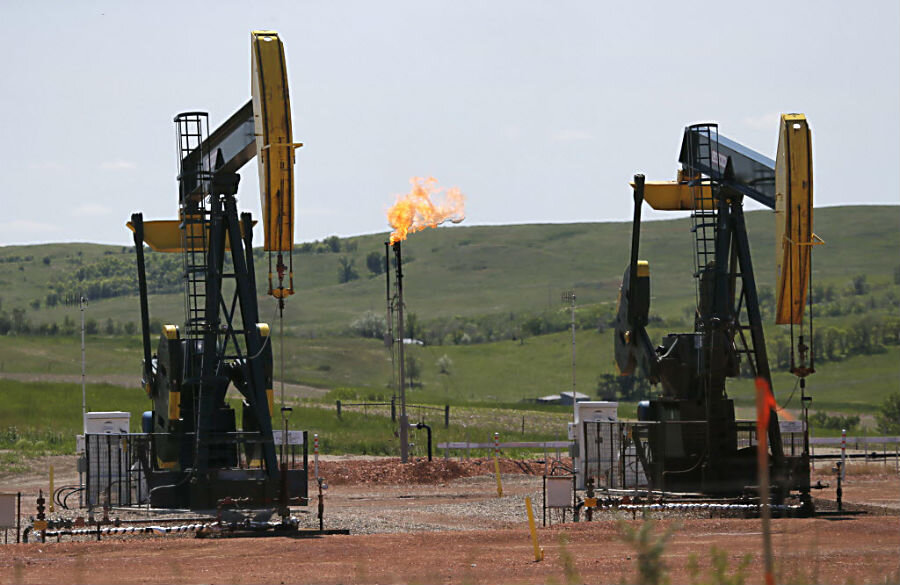EPA to oil and gas industry: Watch your methane emissions
Loading...
Methane, you're on notice.
The Environmental Protection Agency announced Thursday that emissions of the greenhouse gas from oil and gas wells will have to drop 40 percent from 2012 levels by 2025.
"This is the first time that EPA has ever regulated methane from any industry," said Conrad Schneider, advocacy director for the Clean Air Task Force. "That's a really important step forward with respect to controlling greenhouse gases, and toward meeting our international commitments."
At the Paris climate agreement last year, President Obama pledged to reduce greenhouse gas emissions 28 percent by 2025. Now Mr. Obama is working with Canadian Prime Minister Justin Trudeau to cut methane emissions across North America.
The new policies will fight climate change and reduce air pollution, said EPA Administrator Gina McCarthy.
"Every leak that is fixed means more gas is available to be used or sold, and less pollution is affecting the health of our communities [or] our climate," she told reporters on Thursday.
Methane is second only to carbon dioxide as the most prevalent greenhouse gas, and because it traps heat 80 times more efficiently, it has more than 25 times the potential to worsen climate change.
So why the emphasis on methane now? For starters, the United States has seen a recent boom in the production of natural gas, which is almost entirely methane. Because of methane's relative abundance, and because it's cleaner-burning than coal, power plants across the country have been switching to it as a preferred fuel. Its profile is expanding in the transportation sector as well.
The EPA's new rule targets methane leaks in natural gas production, via drilling or pumping, but only from new or modified wells. The rule aims to reduce 520,000 tons of methane emissions – the carbon-footprint equivalent of 11 million metric tons of carbon dioxide – by 2025.
The rule does not apply to many already existing gas and oil rigs, pads, and other equipment, but the EPA has plans to regulate them, too, said officials.
The new regulations will cost oil and gas companies about $530 million over the next 10 years, the EPA estimates, but because the natural gas will be available for sale instead of lost to the atmosphere, they will still come out ahead, say regulators.
Industry officials criticized the new restrictions. "It doesn't make sense that the administration would add unreasonable and burdensome regulations when the industry is already leading the way on methane reductions," said Kyle Isakower, vice president of the American Petroleum Institute's regulatory and economic policy.
"Imposing a one-size-fits-all scheme on the industry could actually stifle innovation and discourage investments in new technologies that could serve to further reduce emissions," he said.
Republicans also slammed the new regulations.
"This new set of rules will add significant burdens and costs to an already highly regulated industry," said Reps. Ed Whitfield (R) of Kentucky, Fred Upton (R) of Michigan, and John Shimkus (R) of Illinois, in a joint statement.
"Our economy is already on shaky ground, and more layers of federal regulation will only serve to threaten existing jobs and discourage new domestic production," said the three men, who serve on the House Committee on Energy and Commerce.
It's important to take the long view, said the EPA chief.
"I think the president has brought visibility to this issue in a way that no president has before, by being so embracing of the science and so clear about the breadth of the threat that climate poses," said Ms. McCarthy. "We're going to keep moving forward on climate change. We're going to keep reducing greenhouse gas emissions."







